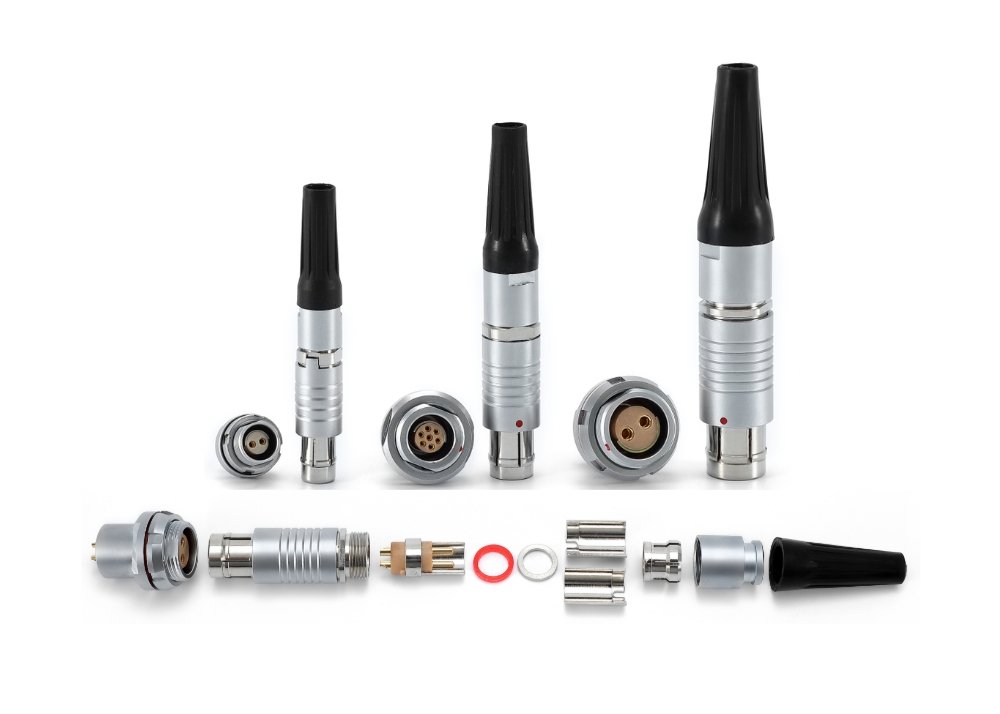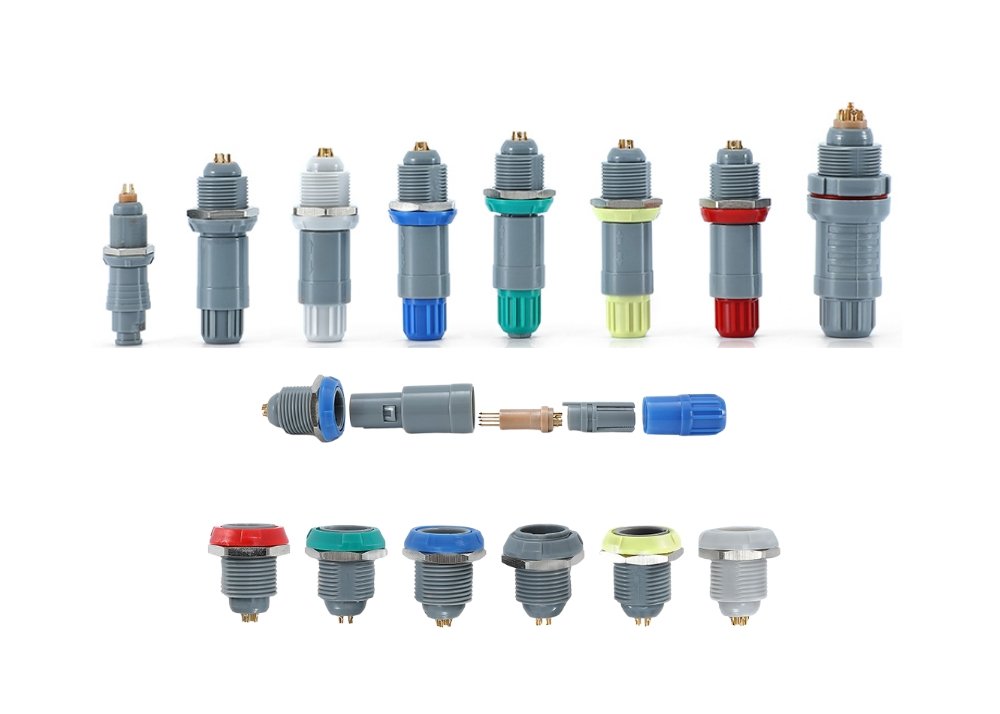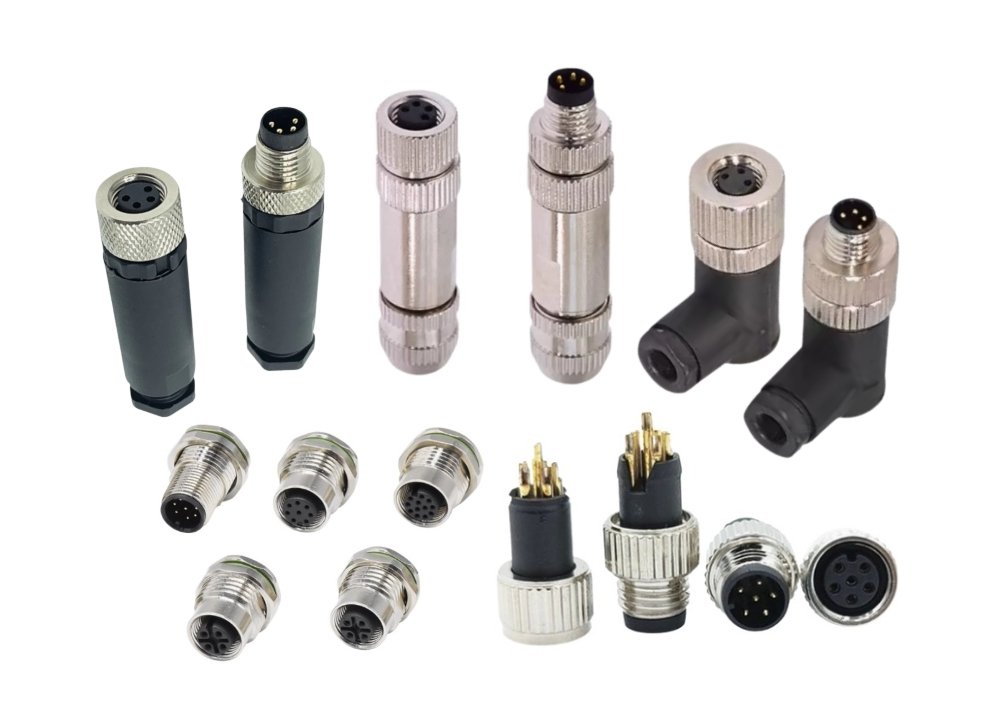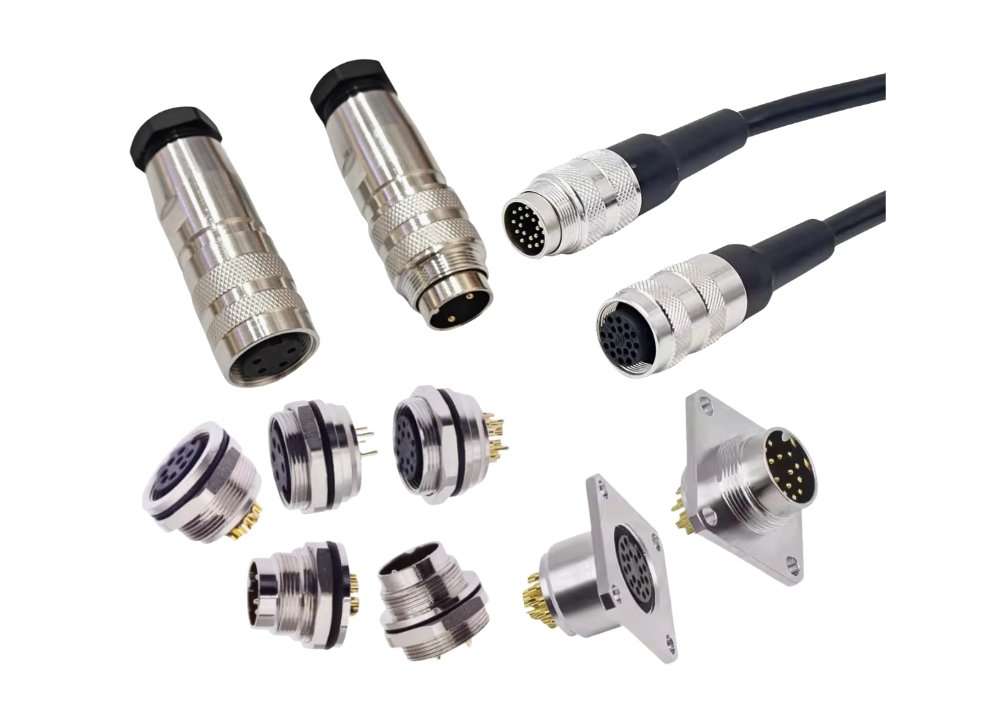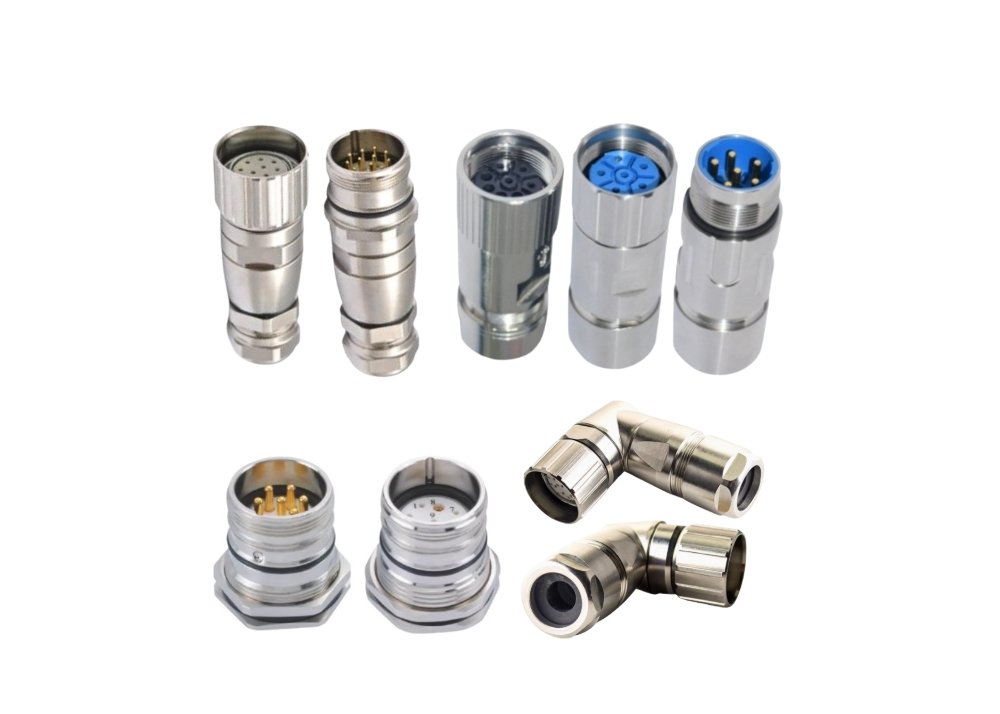- Definition and core features
A circular connector is an electronic connector with a cylindrical shell as the main body and a circular mating surface. It belongs to the 5th category connector defined by the International Electrotechnical Commission (IEC). Its core function is to realize power transmission, signal transmission and data communication between devices. It is widely used in industrial, military and aerospace fields with extremely high reliability requirements.
1. Morphological features:
a. Cylindrical structure: The shell is a symmetrical cylinder, and the plug and socket are connected by thread, snap or push-pull to form a stable mechanical locking system.
b. Multi-core configuration: Supports integrated design from single core to 19 cores or even more contacts to meet the multi-signal transmission requirements of complex systems.
c. Standardized interface: Common specifications such as M5 series, M8 series, M12 series, etc. follow international standards such as IEC 61076 and MIL-DTL-5015 to ensure cross-brand compatibility.
2. Technological evolution:
Since the emergence of military equipment needs in the mid-20th century, circular connectors have evolved from simple metal shells to intelligent interfaces with integrated shielding, sealing, and high-speed transmission functions. For example, modern high-frequency circular connectors (such as the B series and F series) can improve electromagnetic interference (EMI) suppression to more than 65dB by optimizing the shielding layer design.
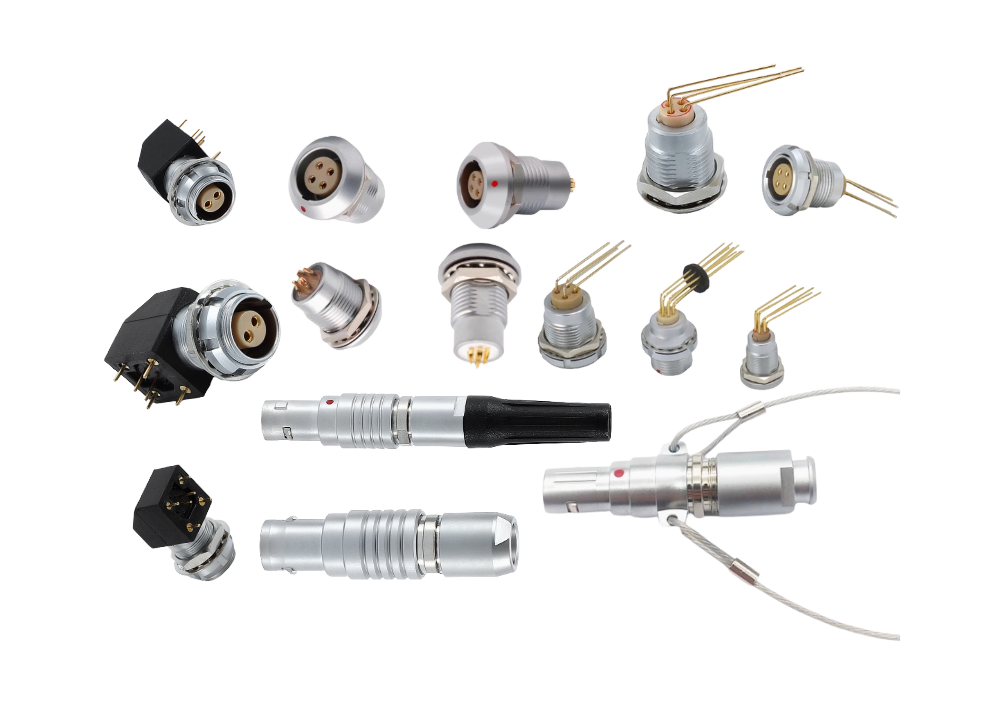
2. Structural analysis and core components
The performance advantage of circular connectors comes from their precise modular design. The main components include:
1. Shell system
a. Materials: bronze, aluminum alloy (lightweight), stainless steel (corrosion resistance), engineering plastics (insulation), and some military models use titanium alloy.
b. Locking mechanism:
Threaded type: 360° rotation locking, strong vibration resistance (such as industrial sensor interface).
Push-pull type: axial force quick plug and unplug, suitable for medical equipment (such as LEMO FGG series).
c. Protection level: IP67/IP68 sealing structure is dustproof and waterproof, and can withstand 1 meter underwater immersion (such as Phoenix M12 series).
2. Contact system
a. Contact material: gold-plated copper alloy (contact resistance <5mΩ), high-frequency scene coating thickness of 0.76μm.
b. Wire spring structure: The jack adopts a multi-contact wire spring design, and the plug-in life exceeds 10,000 times (such as Binder M12 series).
c. Coaxial transmission: supports 50Ω characteristic impedance, and the operating frequency can reach GHz level (such as Molex MX150L series).
3. Auxiliary system
a. Sealing module: silicone or fluororubber sealing ring, withstanding temperature difference of -40℃~125℃.
b. Shielding ring: metal braided mesh or conductive polymer to suppress high-frequency signal interference.
c. Stress release: elastic bellows design to relieve cable bending stress.
3. Technical advantages and performance parameters
The reliability of circular connectors in harsh environments comes from their unique design:
1. Mechanical properties
a. Vibration and shock resistance: can withstand 20g acceleration vibration (10-2000Hz) and 100g shock (such as military models).
b. Plug-in life: ≥1000 cycles (Q series), some industrial-grade products reach more than 5000 times.
2. Electrical performance
| Parameters | Typical value | Test standards |
| Contact resistance | ≤5mΩ (#22D contact) | IEC 60512 |
| Insulation resistance | ≥5000MΩ (500V DC) | GB/T 5013 |
| Withstand voltage | 21000Vrms (sea level) | MIL-STD-202 |
3. Environmental adaptability
a. Temperature range: -65℃~+200℃ (nickel-plated shell).
b. Protection level: IP68 (permanent seal), IP69K (high-pressure and high-temperature flushing).
c. Chemical resistance: resistant to hydraulic oil, fuel, and salt spray (500 hours salt spray test).
IV. Application scenarios and industry penetration
Circular connectors have become the “nerve hub” of cross-industry infrastructure with their “one device for multiple uses” characteristics:
1. Military and aerospace
a. Radar system: transmit high-frequency signals (such as millimeter wave connections for phased array radars).
b. Spacecraft: withstand vacuum, extreme temperature differences and radiation (such as satellite power distribution systems).
c. Individual equipment: waterproof and dustproof tactical communication interfaces (such as the US military JETDS standard connector).
2. Industry 4.0 and intelligent manufacturing
a. Industrial robots: M12 connectors enable quick docking of servo motors and control cabinets.
b. Automated production line: IP67 protection level is suitable for oily and metal dust environments.
c. Energy system: High-voltage connectors are used to connect photovoltaic inverters to the grid.
3. Medical and transportation
a. Medical equipment: Biocompatible materials (such as titanium alloy shells) are used to power surgical instruments.
b. New energy vehicles: High-current connectors (above 100A) support fast charging and battery management systems.
c. Rail transit: Rail signal transmission system that resists electromagnetic interference.
5. Future technology trends
1. High frequency and high speed
Develop coaxial connectors that support frequencies above 40GHz to meet the needs of 5G base stations and radars.
Use nano-plating technology (such as carbon nanotube conductive layer) to reduce high-frequency signal attenuation.
2. Intelligent integration
Embed sensors to monitor connection status (temperature, contact pressure) to achieve predictive maintenance.
Digital twin technology optimizes connector design and shortens R&D cycle.
3. Green Manufacturing
The proportion of recyclable materials has increased to 90% (such as bio-based plastic housings).
Low-temperature welding processes reduce energy consumption (energy consumption is reduced by 40%).
Conclusion
From military confidential equipment to civilian smart terminals, circular connectors have become the “invisible pillar” of modern industrial civilization with their mechanical strength, environmental tolerance and functional integration capabilities. With the breakthrough of new materials and digital technologies, this field is evolving towards higher efficiency and intelligence, and continues to promote the interconnection of the global industrial chain.


